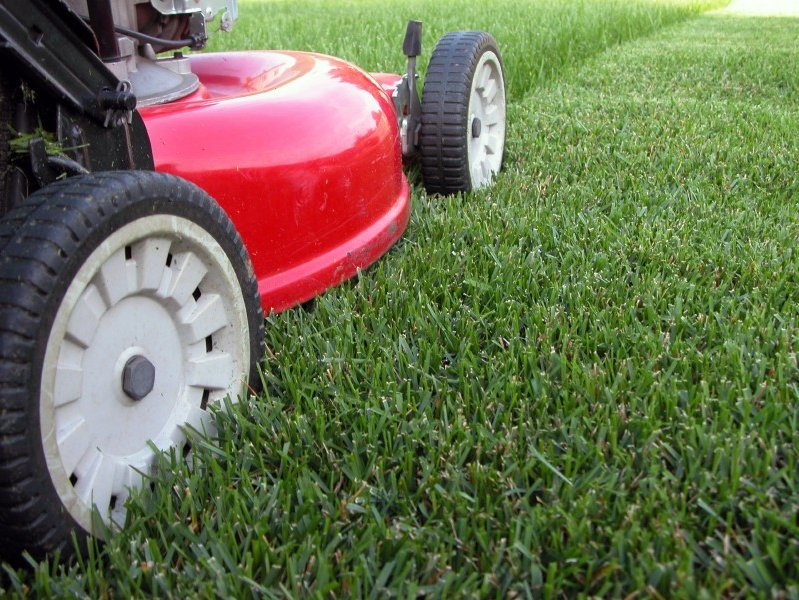On Earth Day, a lot of people are concentrating on "going green," and many homeowners are wishing their lawns would do the same.
Summer is beautiful in Milwaukee, but it also is short. That may be a reason many Milwaukeeans try to maximize their enjoyment by paying special attention to their lawns.
In order to have a lush, healthy lawn during the summer, it is imperative that you take some steps in the spring. We asked two experts for their advice. John Stier is professor and chairman of the Department of Horticulture at the University of Wisconsin. Gary Vanden Berg is the longtime director of grounds for the Brewers and is responsible for the most famous grass in the city -- the playing field at Miller Park.
We spoke to them about soil samples, fertilizer, pet damage and other topics. Here is their advice.
SOIL SAMPLES
Brewers director of grounds Gary Vanden Berg: A lot of people don't like to deal with that, but it's really worthwhile because you aren't going to waste any fertilizer or put any thing on that you don't need.
Once you have a test done, if you have a problem with reading it or understanding what the results are, call the local extension office and they are more than willing to help you decide what that means and what you need for your lawn.
UW professor John Stier: Soil samples should be collected every three-five years to determine needed phosphorus and potassium fertilization requirements.
FERTILIZER
Vanden Berg: You also need to fertilize. If you don't fertilize, your lawn is not going to get thick. If the lawn is not thick, you're going to have problems with dandelions and other weeds.
Stier: Commercial fertilizers are fine to use. Organic sources can work good, too, though many will not release nitrogen quickly so turf recovery from winter damage or summer stresses may be delayed. Most organic sources contain high proportions of phosphorus to nitrogen, which may be counterproductive for water quality. A new state law (passed within the past month) allows organic sources of phosphorus in all instances, though commercial-synthetic fertilizer sources must be phosphorus-free unless a new lawn is being established or the soil test results show a phosphorus deficiency exists. There are many phosphorus-free commercial fertilizers available but few if any organic sources readily available. Organic fertilizers generally will be more expensive to use.
WEED AND FEED
Stier: I'm not a big fan of most weed and feed products. Those aimed at crabgrass control need to be applied early in the spring (about now), which is about one month before we want fertilizer applied, unless it's primarily slow-release nitrogen. Those aimed at controlling existing weeds such as dandelion don't work too well.
Best results are usually obtained applying herbicide separately from fertilizer. Corn gluten meal is a natural product that can sometimes do a good job controlling crabgrass if applied about two weeks before crabgrass germinates. Most lawns will require little to no herbicide application if they are properly fertilized and mowed.
MOWING HEIGHT
Stier: Lawns should be mowed at 2-1/2 to 3-1/2 inches to promote a thick lawn that crowds out weeds, and mowed frequently enough to avoid having large clumps of clippings left on the lawn.
Vanden Berg: Most of the time, people do cut their grass too short. Bluegrass does real well at 3 or 3 ½ inches high. Here (at Miller Park), it's not a good application to cut it that long. We're cutting ours at about an inch and a half, but we're taking care of it a little more intensively than the average homeowner would do.
DE-THATCHING AND AERATION
Stier: Aerating is a good practice in the spring and especially the fall for lawns that have severely compacted soil and/or thick thatch (a puffy layer of grass). De-thatching can sometimes open up the turf canopy for more weeds, so should rarely be done.
Vanden Berg: Bluegrass is a tremendous thatch-maker. It's just a thatch machine. Most people develop that thatch in their lawns. If you don't have some type of practice to get rid of that, you can get thatch three or four inches thick and it can cause all kinds of problems.
PET URINE AND ROAD SALT DAMAGE
Stier: Pet urine and road salt damage are essentially the same thing-salt wicks water away from the turf plant, killing it. Sufficient rain or irrigation leaches the salts deep into the soil, after which the area can be replanted with new grass seed. If a homeowner doesn't want to deal with a patch of seedling grass in the middle of the lawn, use a shovel to cut a section of good turf from a corner of the lawn and place it into the affected area. Reseed the corner from where the section was taken out, the neighbors won't notice it.
Host of “The Drew Olson Show,” which airs 1-3 p.m. weekdays on The Big 902. Sidekick on “The Mike Heller Show,” airing weekdays on The Big 920 and a statewide network including stations in Madison, Appleton and Wausau. Co-author of Bill Schroeder’s “If These Walls Could Talk: Milwaukee Brewers” on Triumph Books. Co-host of “Big 12 Sports Saturday,” which airs Saturdays during football season on WISN-12. Former senior editor at OnMilwaukee.com. Former reporter at the Milwaukee Journal Sentinel.



